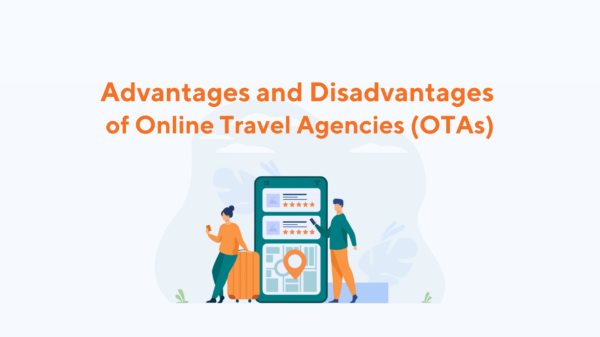It doesn’t matter where you’re from—people everywhere love to travel. Every destination can be wonderfully exotic or dreadfully familiar depending on your perspective, and we bring those perspectives with us when we go.
But while our differences are what make the world such a fascinating place, they also pose a challenge when it comes to marketing to a global audience. What appeals to American tourists might not appeal to travelers from China or Argentina, and the booking habits we expect from European guests might not extend to guests from Canada or Japan.
Fortunately, Expedia Group Media Solutions set out to gain a better understanding of the needs and habits of global travelers, and they shared the results in Multi-National Travel Trends, a global look at the motivations and behaviors of travelers from 11 countries around the world. Over the course of two years, they surveyed thousands of travelers who had booked travel online within a year to learn their preferences and practices.
Travelers from Australia, Canada, China, France, Germany, Japan, UK, US, Mexico, Brazil and Argentina took part, sharing details about their reasons for travel, their spending habits, the ways they plan and the experiences they prioritize.
Here are a few of the takeaways that matter most to tour and activity providers:
Big Spenders
No matter where they’re from, all travelers put hotel, flights and food at the top of their travel budgets. But when it comes to attractions and tours, travelers from different countries prioritize differently.
Travelers from China budget almost as much for attractions and tours (15% of their travel budgets) as they do for shopping or food (16% each). At the other end of the spectrum, people from Japan put only 6% of their travel budgets toward tours—they spend the most by far on accommodations, instead, dedicating 34% of their budgets to hotels.
For travelers from every other country, tours and activities take up 9% to 12% of budgets—making it about as much of a priority as transportation and shopping.
Taking It Easy
When asked about the types of vacations they take, people from around the world agreed: relaxing and sightseeing are very important.
- Travelers from China prioritized relaxation and sightseeing more than travelers from any other country.
- Travelers from Japan rated sightseeing as their top reason for travel, but relaxation was a much lower priority.
- Australians, Canadians and Americans rate visiting family as a bigger reason for travel than sightseeing or relaxation, though not by a lot.
- Less than 30% of travelers from any country took romantic getaways, with Japan and Canada least interested in traveling for romance.
Experiences Are Important
What do travelers look for when planning their trips? Value, almost universally.
Travelers from Germany rated trips that allow them to explore the outdoors and be active over value for their dollar, but respondents from every other country rated value as their biggest consideration.
Museums, historical sites and arts and culture took second place for Chinese and Japanese travelers, while outdoor exploration was the secondary concern for most other countries. Meanwhile, travelers from Japan and Germany cared little for “bucket list” experiences.
And while common wisdom says that travelers all want authentic, “off the beaten path” experiences and recommendations from local, those experiences rated last or second-last for most travelers.
But while almost everyone agreed that value was the most important consideration of all in basic ranking, things changed when respondents were asked to choose what was most important to them. When it came down to it, value was actually the fourth most important consideration for travelers, following the activities they’d be doing on their trips, one-in-a-lifetime experiences, and enjoying the local culture.
Advertising and Influences
Predictably, deals and promotions are major influences in most travelers’ decisions, with 40% to 60% of travelers from most countries identifying them as important factors.
But as much as celebrity influencers dominate the marketing conversation, they were the least influential factor in any the decision making of any country’s travelers. Instead, it was the smaller influencers that mattered: photos by friends and experts, blog articles, and to a lesser degree, videos and hashtags. Travelers from Japan were most interested in expert content and hashtags, while travelers from China rated pictures, videos and hashtags as their most important influences.
As for advertising, appealing deals and imagery were the top considerations for almost everyone (Chinese travelers rated informative content above appealing deals). Reviews, while undoubtedly an important part of the booking experience, didn’t make much of a difference for most travelers when they were included in ads.
A Big World
Last year, international tourist arrivals reached 1.4 billion—two years ahead of schedule, according to UNWTO. Changing climates and shifting demographics might affect how people travel and where they visit, but the desire to explore and see the world endures in countries around the globe.
If you want to reach travelers coming from different countries, it helps to know why they’re traveling and what they’re looking for. According to Expedia’s Multi-National Travel Trends report, we’re all looking for good value, but the details vary—and those details can make a world of difference.







